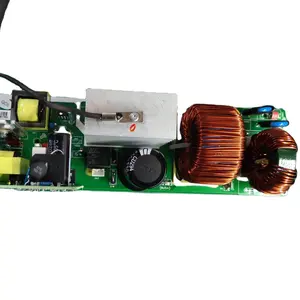Popular in your industry



































Top categories
About 50 ohm rf resistor 9
Understanding the 50 Ohm RF Resistor 9
The 50 ohm RF resistor 9 is a specific category of electrical components designed for radio frequency (RF) applications. These resistors are integral in managing signal integrity within various electronic devices, ensuring that the impedance matches the system requirements to minimize signal reflections and losses.
Types and Varieties
RF resistors come in various forms, including surface mount, through-hole, and flange-mounted configurations. Each type serves a unique purpose, catering to different circuit designs and thermal management needs. The surface mount 50 ohm resistors are commonly used in compact devices due to their small size, while through-hole variants offer easier handling for prototyping or educational purposes.
Applications and Uses
The application of 50 ohm RF resistors spans across multiple industries, from telecommunications to medical equipment. They are often found in power amplifiers, attenuators, and impedance matching circuits. Their role is crucial in maintaining system performance and preventing damage to sensitive components due to impedance mismatches.
Features and Materials
These resistors are characterized by their resistance value and power rating, with materials like ceramic, carbon film, or metal film being used to achieve the desired electrical characteristics. The high-frequency 50 ohm resistor is engineered to offer stability and reliability in environments where RF signals are prevalent.
Advantages of Precision Resistors
Choosing a precision 50 ohm resistor ensures accurate impedance control, which is vital for RF applications. The stability and tolerance of these resistors are paramount, as they directly influence the signal quality and overall device performance.
Selection Considerations
When selecting a 50 ohm resistor for RF applications, it is essential to consider factors such as the operating frequency range, power rating, and the thermal profile of the application. These parameters ensure that the resistor will function as intended in its specific use case.






















